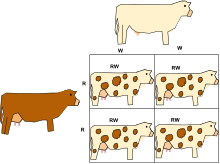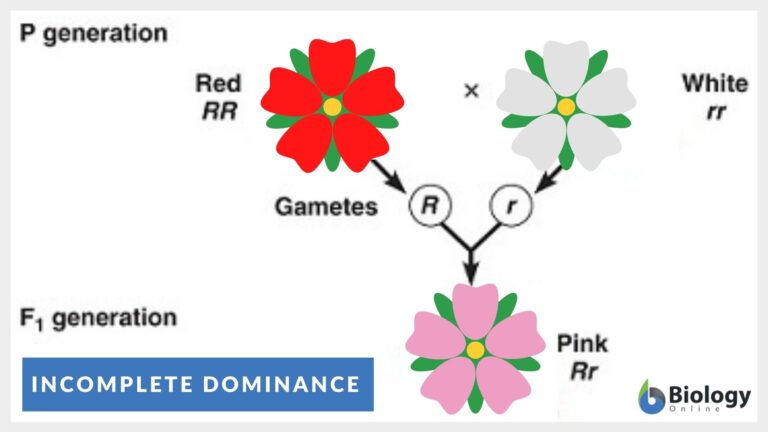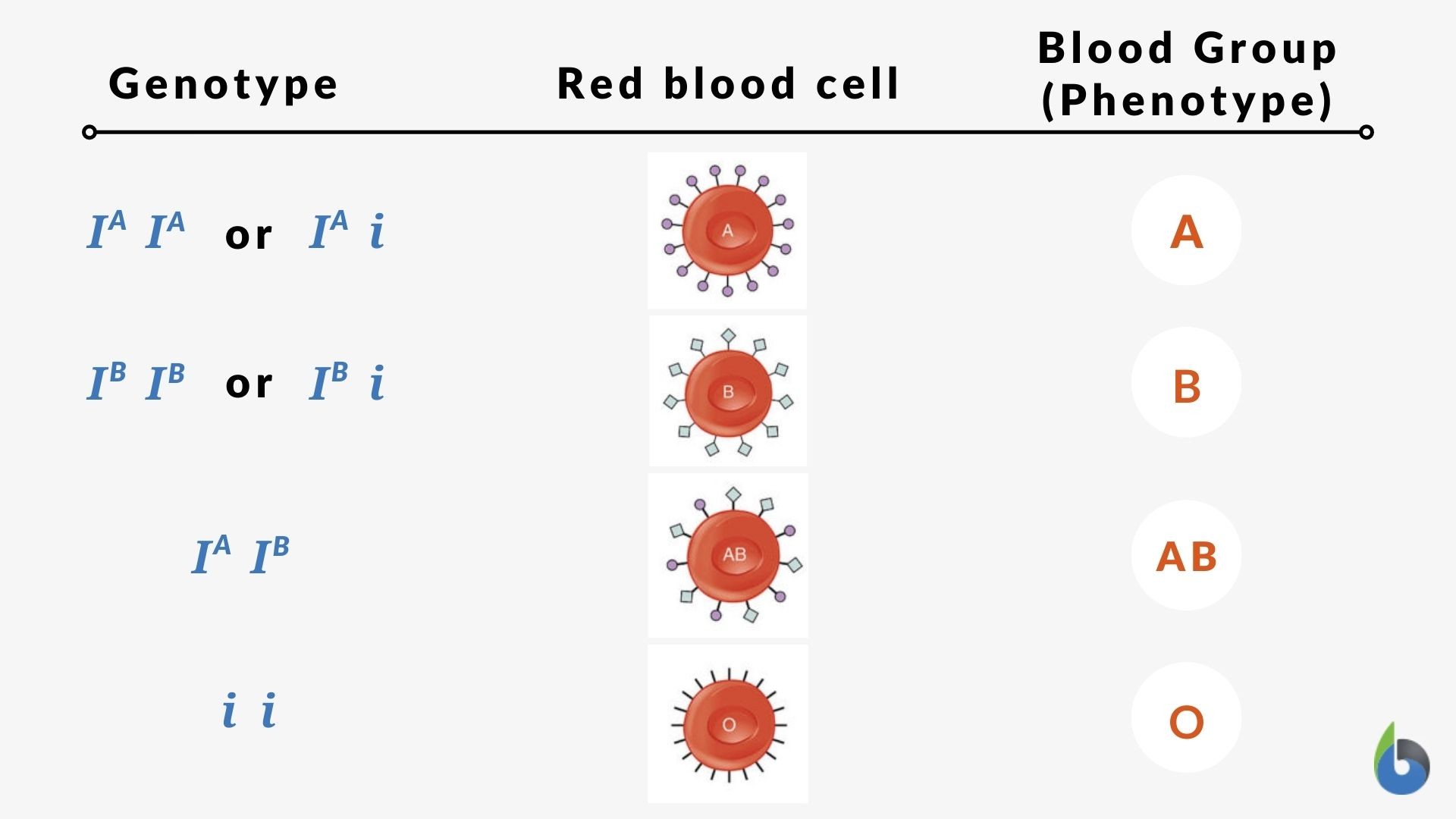Biology Forum › Genetics › what is the key to the recognition of codominance?
- AuthorPosts
- August 12, 2021 at 7:17 am #118473
 AJParticipant
AJParticipantIsn’t it fascinating that the offspring of the parents, a white bovine and a brown bovine, is neither completely white nor completely brown? Instead, it is a white bovine with brown spots or a brown one with white spots (Figure 1). Have you ever wondered why this happens? This becomes all the more intriguing considering the Mendelian law of genetic inheritance wherein dominant trait is expressed.

Figure 1: Appearance of spotted cow in a cross between whole white and whole brown bovine. Full explanation of this test cross is found here: https://www.biologyonline.com/dictionary/codominance.
What is the key to the recognition of codominance?
The phenotypic expression of both the phenotypes of the parents is known as Co-dominance. Such inheritance is seen in heterozygotes. In such heterozygotes, the phenotype expressed is neither dominant nor recessive; in fact, it is a combination of both the parent’s phenotypes.
In genetics, dominance is the preferential expression of one gene or allele over the other. Three types of dominance are found- complete dominance, incomplete dominance, and codominance.
Understanding complete dominance is pretty simple. It is the expression of a dominant gene or allele over the other. However, understanding the other two forms, i.e., incomplete dominance and codominance, can be confusing.
It is essential to understand that the Co-dominance is different from incomplete dominance.
Both Co-dominance and Incomplete dominance do not follow the Mendelian law of genetic inheritance. A perfect example of incomplete dominance is the appearance of a pink flower from the cross over between a red and white flower (Figure 2). The appearance of the pink flower is due to dilution of the dominant trait with the recessive trait or partial expression of the dominant trait.
Figure 2: Appearance of pink flower in a cross between white and red flower.
On the other hand, codominance is the expression of both phenotypes of homozygotes in a heterozygote. In codominance, there is a continuous distribution of both the phenotypic traits in the progeny. We have already seen the case of a spotted brown and white bovine.
Another prominent example of codominance is the blood group AB. The human blood group follows the ABO system and the AB blood group is the expression of both dominant traits in the offspring together. In human blood cells, antigen H is present and is the expression of three alleles- IA, IB, and i.
IA is responsible for the expression of N-acetylgalactosamine while IB is the expression for galactose. On the contrary, ii results in the absence of both N-acetylgalactosamine and galactose due to the lack of both the dominant alleles. This is seen in blood group O, which lacks such expression of H antigen. On the other hand, blood group AB has both N-acetylgalactosamine and galactose on H antigen, wherein both the dominant alleles are expressed in a heterozygote (Figure 3). This clearly indicates that in codominance, the phenotype of both homozygotes are produced in the heterozygote.
Figure 3. Expression of alleles resulting in different blood groups. Image source: Modified by Maria Victoria Gonzaga of Biology Online from the diagram of OpenStax College, CC BY-SA 3.0.
In jist, we can say, the key for codominance is the simultaneous expression of multiple alleles in a heterozygote. What’s your take on this? Let us have more case studies, it would be really interesting to have more examples to exemplify codominance.
- AuthorPosts
You must be logged in to reply to this topic.


